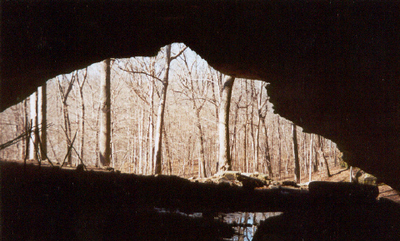TalkAbout WalkAbout
PLACES ONE HAS NOT SEEN HIDE FOREVER IN THE DARKNESS OF NEGLECTED CURIOSITY
IF YOU DON'T GO YOU'LL NEVER KNOW
It's been said time and again, "You don't know what you've got 'til it's gone."
The reverse of this began to become true for me, a native of Southern Illinois, when I left the area to attend college in 1980.
My love of nature began while growing up in Southern Illinois. That love developed as I studied to obtain a Bachelor of Science degree in Zoology at Northern Arizona University.
This is what I learned. Appreciation begets curiosity, curiosity begets a quest for knowledge, knowledge begets understanding, and understanding begets greater appreciation.
GOING, GOING GONE
I have lived in and explored many wonderful places around the country including Illinois, Alaska, Arizona, Colorado, Texas and Wyoming. Good fortune has also allowed me to visit and explore some of nature's best, outside the U.S.
Canada: Alberta, Manitoba, British Columbia, Saskatchewan and to the far north the magnificent Yukon Territory just 200 miles below the Arctic Circle.
Mexico: Rocky Point, near Puerto Penasco on the Gulf of California
Central America: Bahama (Nassau), Costa Rica's Poas and Irazu Volcanoes, Valle Central, Puerto Limon, on the Caribbean Coast, Puntarenas on the Pacific Coast, the savanna Province of Guanacaste and the Monte Verde Cloud Forest, and en route I have flown over and touched down in all Central American countries except Belize and Panama.
From the air, the most impressive view I have ever experienced occurred while flying over Guatemala's Volcanic Region. One capable of imagining a geological events video in high speed can envision a landscape percolating lava and clouds of sulfur gas.
What does all this have to do with Southern Illinois?
The answer might surprise you.
Southern Illinois is "One of North Americas Most Biologically Diverse & Geologically Fascinating Areas."
North, South, East and West meet creating unique combinations of plants and animals. Many species stretch the limits of their range here in Southern Illinois. Among birds, accidentals such as Water Turkey (Anhinga), Scissor-tailed Flycatcher, Oregon Junco, Brown Pelican and Mississippi Kite have been reported. As global warming progresses the ranges of several more typically southern plants and animals, such as the armadillo are beginnning to appear in Southern Illinois. More on this topic later.
Equally diverse is Southern Illinois geology.
One of two major areas in Illinois left relatively untouched by the awesome leveling force of glaciation is found in extreme Southern Illinois. Much of this rugged area is part of the Shawnee National Forest.
"A woods is a woods...is a woods, is definitely NOT true of the Shawnee!"
Ancient wind and water sculpted stone, hidden beneath horizons of deciduous and evergreen trees whisper Southern Illinois' natural and not-so-natural history to those eager to listen.
Giant boulders and barren rock formations rise conspicuously from the forest floor as monuments to the ages. Such rugged terrain commands imagery which may usher ones thoughts two to three hundred million years into prehistory. Pennsylvanian plant fossils abound in local shale, limestone and sandstone.
In one day, a hiker can traverse xeric (desert-like) sandstone barrens, humid sub-tropical ravines, tundra (arctic-like) microcosms, southern cypress-tupelo swamps and even lush, moss cloaked bluffs, graced with beautiful intermittent waterfalls. One can see and smell fragrant wildflowers as they splash color throughout the forest and meadows during spring, summer and autumn; discover interesting combinations of ferns, cacti and mosses sharing common turf. Scan stony canyon bluffs down to their crystal clear stream beds and witness dramatic shifts in ecosystems.
Rarely, will one encounter such stark, rich diversity with such relative ease.
Within a fifty mile radius of the heart of the Shawnee National Forest numbers of plant and animal species equal and in many cases far exceed numbers found in much larger National Parks and Forests throughout North America.
For example, Larue-Pine Hills Ecological Area (about 4,000 acres) is home to approximately 1,000 species of native plants.
Compare that to the Great Smoky Mountain National Park which claims 1,500 species but covers 130 times larger area.
Fishes, amphibians, reptiles, birds and mammals share this uncommon ecosystem with crustaceans, various mollusks, arachnids, insects and many other wonderfully fascinating forms of life.
Yes, even bizarre marsupials haunt backyards, roadsides and highways in whimsical Illinois DownUnder (as I ike to call it).
Collectively, these assure human observers many delightful encounters. From impressive pileated woodpeckers and white-tail deer to tiger beetles and coyotes, life abounds.
In short, Southern Illinois and the Shawnee National Forest have something to offer everyone who shares a love of nature!
No matter what biome(s) you've experienced; Desert, Mediterranean, Mountain, Savanna, taiga, temperate grasslands/forests, tropical rain/cloud forests, or tundra, the four charismatic seasons and the fascinating geologic features of Southern Illinois and the Shawnee National Forest will capture your imagination and refresh body, mind and soul.
"Should ones understanding of nature's ways blossom,
chills will tingle the spine every time a bobcat screams in the night.....
......or a tree frog chirps"
In my case I didn't truly know what I had until I was gone.
Having learned more about our natural world and having experienced many wonderful natural places I, now, more greatly appreciate this place I proudly call home, Southern Illinois.
Discover and appreciate Southern Illinois' hidden natural treasures or you'll never know what you've been missing.
Seeking an understanding of nature and her miraculous ways is a journey from darkness to light.
Photo by Erica Travis
